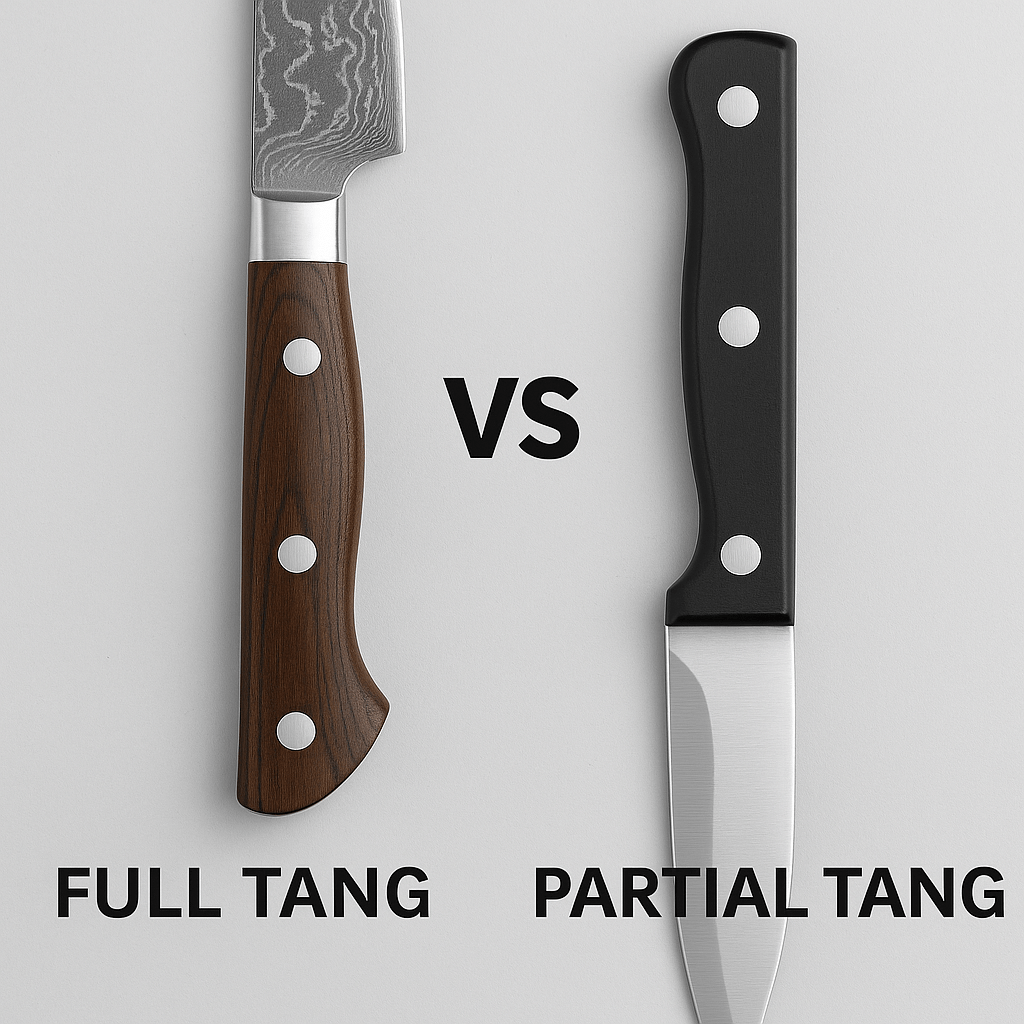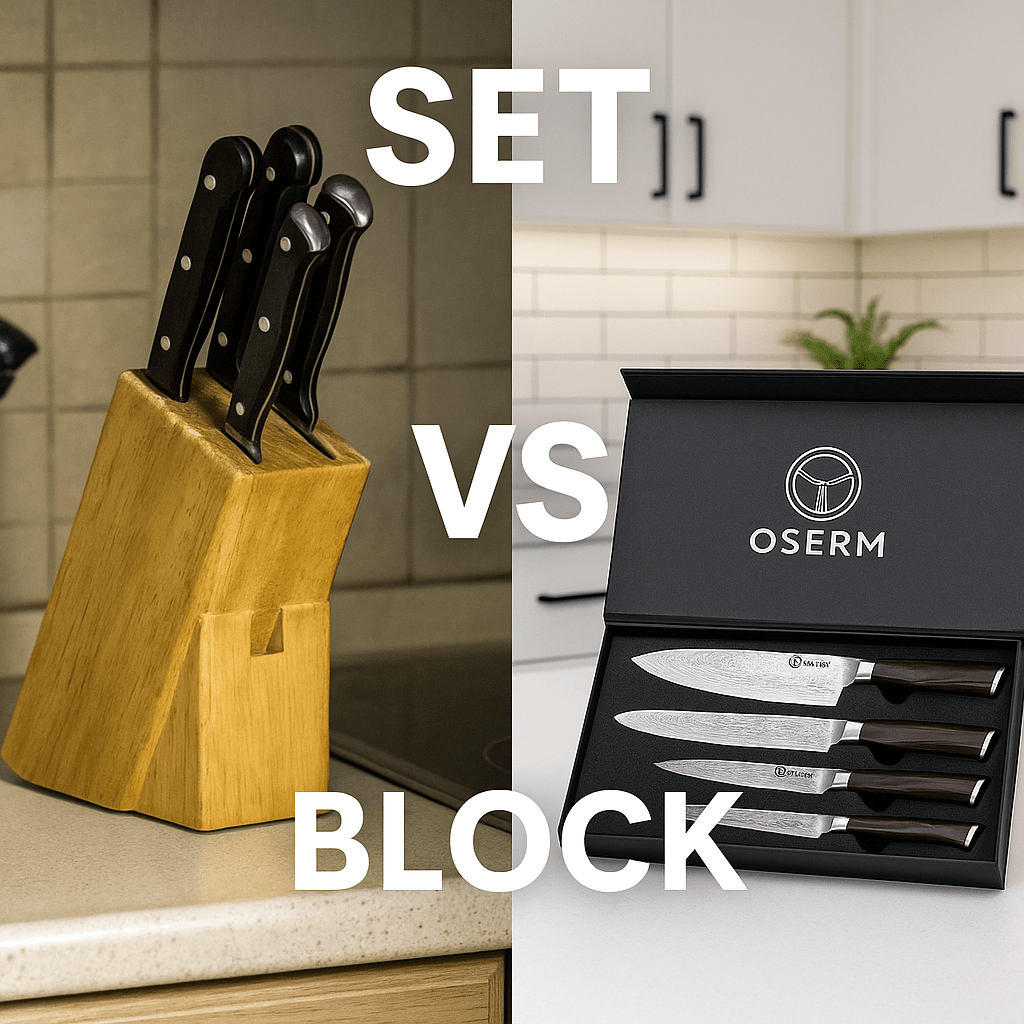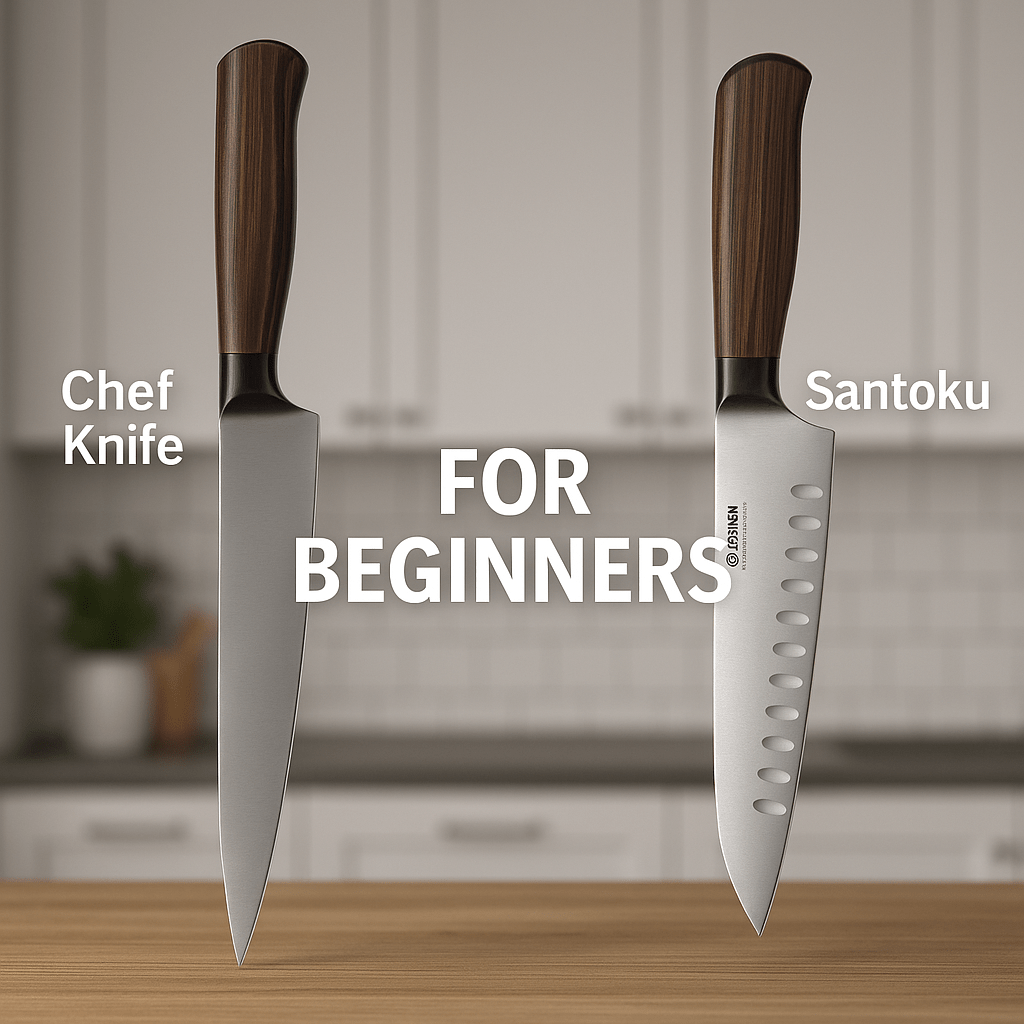
Full Tang vs Partial Tang Knives – Why It Matters
When we look at a knife, we often focus on the blade—its sharpness, steel quality, or beautiful Damascus patterns. But there’s another part that’s just as important for performance and safety: the tang.
In this guide, we’ll explore what the tang is, the difference between full tang and partial tang knives, and why professional chefs prefer one over the other.
What Is a Tang?
The tang is the portion of the blade that extends into the handle. It’s the hidden backbone that connects the cutting edge to your hand, determining how well the knife feels, balances, and lasts.
There are two main types:
- Full Tang: The metal runs the entire length and width of the handle, often visible along both sides.
- Partial Tang: The metal only extends partway into the handle—sometimes just halfway or as a thin rod.
Full Tang Knives – The Professional’s Choice
A full tang knife is considered the gold standard in knife construction. Because the blade and handle are forged from a single piece of steel, full tang knives offer exceptional durability and balance. You’ll often notice rivets along the handle that secure the tang firmly in place.
- Advantages:
- Better balance and control during cutting
- Increased durability and resistance to handle breakage
- Enhanced safety due to solid construction
- Feels more stable, especially for professional use
- Disadvantages:
- Slightly heavier, though many chefs prefer this for stability
- Higher cost due to more steel and forging work
Partial Tang Knives – Lighter, But Weaker
A partial tang knife may feel lighter and cheaper, but it sacrifices durability and balance. Since the metal doesn’t run through the entire handle, it can separate over time, especially under heavy use or if dropped.
- Advantages: Lower cost, lighter weight.
- Disadvantages: Weaker construction, poorer balance, less safe for forceful cutting.
How Tang Affects Performance
The tang impacts not just strength, but how a knife performs in your hand. A well-balanced full tang knife reduces wrist fatigue and improves precision—especially in repetitive kitchen tasks like slicing vegetables or trimming meat.
For professionals, the confidence of a knife that feels “solid as one piece” is irreplaceable.
OSERM’s Forged Damascus Knives – Built with Full Tang Precision
All OSERM Damascus knives are forged full tang, ensuring every blade offers the perfect balance between strength, comfort, and aesthetics. Each knife is made from VG-10 core steel layered with 67 Damascus folds, creating both visual beauty and lasting stability.
Our craftsmen align the tang precisely with the resin-wood handle, making every knife not only a tool—but an extension of your hand.
When to Choose a Full Tang Knife
If you cook often, care about durability, and want a knife that lasts for years, choose full tang. It’s the foundation of premium knives used by chefs around the world.
For occasional use, partial tang knives might suffice—but over time, you’ll feel the difference in every slice.
Conclusion
The tang might be hidden, but its importance can’t be overstated. A full tang knife delivers power, stability, and safety—qualities that define true craftsmanship. OSERM’s full tang Damascus knives embody this principle, merging traditional forging with modern design to create knives that perform beautifully for life.
Weekly Deal 🔥
Experience true full-tang craftsmanship with OSERM’s Damascus knife collection. Each knife is hand-forged for perfect balance, stunning aesthetics, and lifelong durability.
You Might Also Like
- Forged vs Stamped Knives – What’s the Difference?
- Knife Weight and Balance – Finding Your Perfect Match
- Damascus vs Stainless Steel – Which Is Better for Everyday Use?
Tags: full tang knives, forged knives, Damascus craftsmanship, OSERM knives, Japanese blades






